Kara’s Story
Kara’s story with GIST/ Carney Triad began during the Super Bowl of February, 2004.
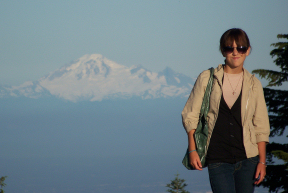 She had been recuperating from the flu (she really did have the flu as half of her school class had it also). During the game, Kara began vomiting again with severe abdominal pain, complaints of headache, and shortness of breath. I felt that these symptoms were different than her flu symptoms had been. We went to the pediatrician who felt everything was OK. I insisted that Kara kept complaining of pain in her abdomen in one spot. So they then put her back on the exam table and palpated her abdomen and felt something suspicious. They said that she needed an ultrasound but, because she had eaten a Pop-Tart at 8 a.m, they would have to wait until the next day.
She had been recuperating from the flu (she really did have the flu as half of her school class had it also). During the game, Kara began vomiting again with severe abdominal pain, complaints of headache, and shortness of breath. I felt that these symptoms were different than her flu symptoms had been. We went to the pediatrician who felt everything was OK. I insisted that Kara kept complaining of pain in her abdomen in one spot. So they then put her back on the exam table and palpated her abdomen and felt something suspicious. They said that she needed an ultrasound but, because she had eaten a Pop-Tart at 8 a.m, they would have to wait until the next day.
My response: I DON’T THINK SO!
Luckily, I had a good friend in a town just 30 miles away who was a radiologist. He agreed to do the ultrasound stating that by 4:30pm everything would be out of her stomach and it would be fine. He told us later that he had really figured Kara was impacted or something similar, and he would be able to ease our minds so that we didn’t have to wait or worry another day. After the ultrasound, he came in with a white face, and we knew it was not good. He said that he could not tell us not to worry because he was very worried. There was a large mass and we needed a CT scan. I called the pediatrician to tell her that we had gotten our own ultrasound and gave her the results.
We were admitted the next morning for blood work, and CT scans. They found several possible tumors and did the urine study which showed probable paraganglioma. They did an MRI and stated that we needed surgery. We were scheduled for a MIBG which Kara ended up having for over 3 hours on her 11th Birthday. She was discharged with plans for surgery at the hospital in our town.
My husband and I called every Doctor that we knew and got them helping to find the best place to take Kara. We knew that we were probably dealing with a paraganglioma due to the positive MIBG and urine tests. We called Duke and St. Judes hospitals: they both told us that we needed to find somewhere else. I thank them that they were honest in admitting that paraganglioma was not their specialty in pediatrics.
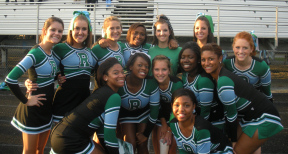 We wound up at CHOP (Children’s Hospital of Philadelphia) because they were well known for rare cancers. We lived in the Ronald McDonald House for over 6 weeks with Kara both inpatient and outpatient at times for testing of every kind imaginable. They decided that she needed surgery, but delayed it a week due to the risk of skyrocketing blood pressure from the catecholamine surges possible with a paraganglioma removal surgery. (We were given a website to tell everyone about Kara’s condition and status at carepages.com. This has been awesome to provide accurate information about Kara, and to get support and notes from those who care. We utilize this carepage even up to this day!)
We wound up at CHOP (Children’s Hospital of Philadelphia) because they were well known for rare cancers. We lived in the Ronald McDonald House for over 6 weeks with Kara both inpatient and outpatient at times for testing of every kind imaginable. They decided that she needed surgery, but delayed it a week due to the risk of skyrocketing blood pressure from the catecholamine surges possible with a paraganglioma removal surgery. (We were given a website to tell everyone about Kara’s condition and status at carepages.com. This has been awesome to provide accurate information about Kara, and to get support and notes from those who care. We utilize this carepage even up to this day!)
Finally on 2-26-04, we had surgery. The surgery to remove the paraganglioma was unsuccessful due to the immense vascularity of the tumor. However, the surgeon did remove another small tumor which was outside of the stomach wall. The pathology came back GIST. The oncologist who had dealt with GIST in the past at CHOP, Dr. Susan Reingold, met with us and told us about Carney Triad.
CHOP and the Ronald McDonald House were great in that they actually had computers for families to use at both places; we had searched every internet site possible for medical knowledge on GIST in every free moment that we had. We were devastated to learn that now our daughter did not have just one but possibly three types of cancer.
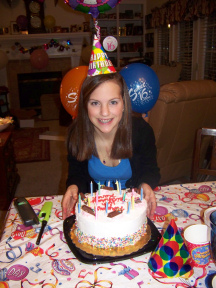 We were told that our best bet for removing the larger tumor was with Dr. von Allmen who had experience with pediatric gist while at Philadelphia but had moved to be the chief pediatric surgeon at UNC Children’s Hospital. Surgery began on 4-19-04 to attempt removal of the very vascular paraganglioma. Twenty-two hours later on 4-20-04, Kara’s surgery was successful with the skill of 3 pediatric surgeons working around the clock to hand tie each and every small blood supply to the tumor to prevent Kara from bleeding to death during removal of the tumor! The paraganglioma was cancerous but with a very low mitotic rate of 1 per 50 high-power fields. They told us Kara would be in ICU for weeks and on the ventilator for several days minimum. She was off the vent in 18 hours and out of ICU in 3 days! People from all over the hospital came to see the miracle surgery girl!
We were told that our best bet for removing the larger tumor was with Dr. von Allmen who had experience with pediatric gist while at Philadelphia but had moved to be the chief pediatric surgeon at UNC Children’s Hospital. Surgery began on 4-19-04 to attempt removal of the very vascular paraganglioma. Twenty-two hours later on 4-20-04, Kara’s surgery was successful with the skill of 3 pediatric surgeons working around the clock to hand tie each and every small blood supply to the tumor to prevent Kara from bleeding to death during removal of the tumor! The paraganglioma was cancerous but with a very low mitotic rate of 1 per 50 high-power fields. They told us Kara would be in ICU for weeks and on the ventilator for several days minimum. She was off the vent in 18 hours and out of ICU in 3 days! People from all over the hospital came to see the miracle surgery girl!
Next we tackled the GIST in stomach and near stomach wall. She was scheduled for a total gastrectomy, but surgeon was able to save 75% of her stomach due to no tumors in area near the esophagus that had looked suspicious on CT scans. This area of concern ended up being a benign lymph node at the gastroesophageal junction. This spot being benign allowed Kara to keep most of her stomach! She had a temporary feeding tube for safety issues but it was removed within a week of GIST removal. GIST were mixed spindle and epitheliod type, and had a higher mitotic rate of 12 per 50 HPF.
Kara continues this surgical path over and over. I will not give a play by play on every single surgery, but please do read the medical history below to see what our child, Kara, has endured. Kara was started on Gleevec 500mg at CHOP in 3-04 and continued until 7-06. She wanted to stop and there really wasn’t a lot of information suggesting pediatric durations for adjunctive therapy that I could find, so we let her stop. Kara had a tough time at first with Gleevec. 8 mg of Zofran allowed her to keep it down most of the time. Her biggest side effect was that she looked like a ghost! She was one of the ones that her skin would not tan; she had hypopigmentation. She hated taking the medicine but was faithful without ever having to be reminded. She stopped only for surgeries which were frequent. We have since found studies showing that Gleevec works best on adult type GIST with specific mutational defects, and Gleevec probably is not the best choice for pediatric wild type GIST /Kara’s type of GIST. New studies are showing great promise for new drugs such as Tasigna. We have elected to not resume any oral chemotherapy at this point. Kara has had one reoccurrence with another surgery for GIST on 11-19-07 with loss of only 10% of her stomach with this surgery.
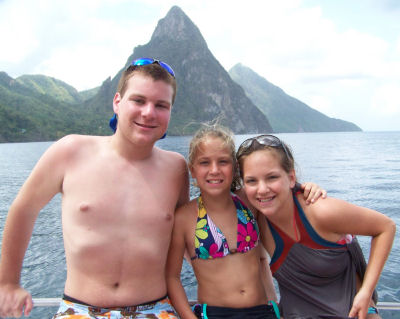 The surgery on her left carotid body for a paraganglioma was encased in a nerve involved with the cervical sympathetic chain. Removal of the tumor caused surgically induced Horner’s syndrome meaning Kara’s eyelid drooped due to the innervation to one of the eyelid muscles being removed with the tumor. We eventually had plastic surgery to fix that. As you can imagine for a 12 year old girl, at the time, it was not fun to have people always ask what was wrong with her eye. She even had a substitute teacher one time tell her she needed to go home because she was having an allergic reaction in her eye.
The surgery on her left carotid body for a paraganglioma was encased in a nerve involved with the cervical sympathetic chain. Removal of the tumor caused surgically induced Horner’s syndrome meaning Kara’s eyelid drooped due to the innervation to one of the eyelid muscles being removed with the tumor. We eventually had plastic surgery to fix that. As you can imagine for a 12 year old girl, at the time, it was not fun to have people always ask what was wrong with her eye. She even had a substitute teacher one time tell her she needed to go home because she was having an allergic reaction in her eye.
Two of Kara’s surgeries were very intense: we were not sure she would survive the surgery itself. The first 22-hour surgery was one, and the second one was the surgery for the tumor on her heart/aortic and pulmonary arteries. The heart surgery was supposed to last 8 hours with them stopping her heart and placing her on the heart lung machine etc. When they went in, the surgeons said the tumor popped
out almost like coring an apple. Surgery was safely and successfully over in 3 hours; we were thrilled. We had actually taken Kara’s Make-A-Wish trip to Atlantis in the Bahamas the week before this heart surgery because we did not want to put off the trip due to the possible complications of this surgery. We became frequent flyers at the UNC children’s hospital and became friends and not just patients with many of the wonderful staff who worked there.
Kara has had a problem with keloid formation from her surgical scars and has had one plastic surgery to help with this. The scar from her heart/mediastinum surgery was especially raised and red. Kara has also formed excessive scar tissue on the inside. Now, it takes surgeons up to 3 hours to get through the scar tissue to get to the site they are really attempting to get to when they go back in.
Emotionally Kara has been amazing! She has a much stronger faith in God than the average teen her age, and that has given her an inner strength that is amazing.
Medically, the doctors claim that she never fits any textbook description of any kind. She recuperates from major surgeries much faster than the normal patient. She looks anatomically different than she should per the textbooks frequently during surgery. She obviously (with so many tumors of three different types) is a medically statistical rarity, and she has never missed a beat academically even with all of the missed school and tiredness during recuperations.
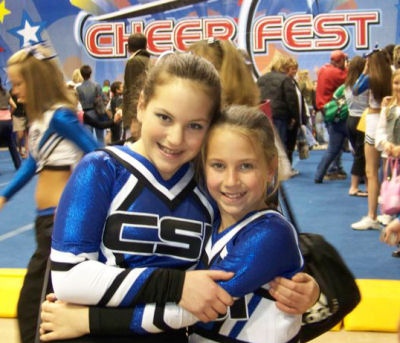 Kara pushes herself academically and physically much sooner post-op than Mom and Dad prefer. We have learned that she might be more stubborn than her Mom! During 2004 she missed almost 4 months of school and came back to have the highest grade point average in her class (Yes, that’s Mom bragging!) Now in her Now in her junior year of high school Kara continues to show determination in school as she is taking challenging AP courses on an increasing basis with the goal of being admitted to UNC Chapel Hill as a student in the fall of 2011.
Kara pushes herself academically and physically much sooner post-op than Mom and Dad prefer. We have learned that she might be more stubborn than her Mom! During 2004 she missed almost 4 months of school and came back to have the highest grade point average in her class (Yes, that’s Mom bragging!) Now in her Now in her junior year of high school Kara continues to show determination in school as she is taking challenging AP courses on an increasing basis with the goal of being admitted to UNC Chapel Hill as a student in the fall of 2011.
Kara made cheerleading for football and basketball for her middle school in the fall of 2005, and we actually had to reschedule scans and doctor visits around game and practice days. Kara actually won best all around cheerleader in middle school, even over the older girls, at the athletic award’s banquet. She was a JV cheerleader in 9th grade, and tried out only 5 weeks post-op from one of her surgeries( a paraganglioma near her kidney). She won most valuable cheerleader award for her JV high school team at the 2008 awards banquet. In 10th grade , Kara moved up at try outs to the varsity cheerleading team for her high school, J. H. Rose. She continues to cheer for J. H. Rose this year as a junior for the varsity team. Kara is involved in many clubs and tries to volunteer for several groups as well. She successfully achieves leading a normal teen life in between all of her scans and multiple surgeries.
Due to the hypothyroidism (we think caused by the Gleevec),Kara did have issues with fatigue for a long time. She now has recently been testing in the normal range on her thyroid testing; the doctors feel that her thyroid has now stated working again since she has now benn off of the Gleevec for three years. She never lets the fatigue prevent her from doing school, cheering, or social activities! Even with tumors inside of her at the current time( most recent scans from fall 2009 show 1 tumor in upper posterior mediastinum and 3 small tumors near gallbladder and small intestine) Kara continues going to school all day with no obvious issues other than more fatigue than probably the average teen. Because she does not look sick, many people do not understand what she is dealing with. She has had great dedication to keep up her grades.
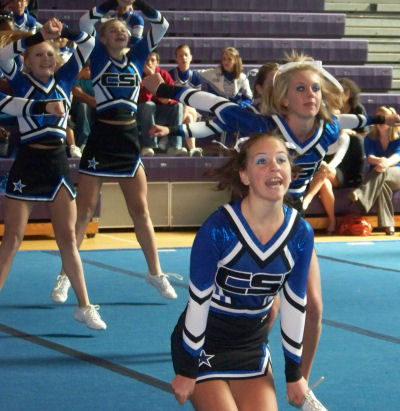 The thing about Carney Triad is that even though you think you are dealing with paraganglioma pre-op, you never know until pathology gets back whether or not you have GIST again. In addition to Kara dealing with the emotions from cancer and so many hospitalizations, she has the pleasure of going through puberty at the same time! As the Mom, I am the one who catches the wrath on that one 90% of the time!
The thing about Carney Triad is that even though you think you are dealing with paraganglioma pre-op, you never know until pathology gets back whether or not you have GIST again. In addition to Kara dealing with the emotions from cancer and so many hospitalizations, she has the pleasure of going through puberty at the same time! As the Mom, I am the one who catches the wrath on that one 90% of the time!
Even with all of very trying and stressful times that we have been through, we feel blessed that Kara has been able to have so many good times in between the hard ones. Being gone with Kara in 2004 for so long was hard on the whole family including the 2 siblings that Kara left behind at home; this has continued in brief periods since February 2004 as Kara continues to go back for surgery. It is so true that a sick family member affects the whole family!
We choose to deal with Kara’s cancer in several specific ways:
1. Arm ourselves with all of the knowledge that we can find and keep trying to find more.
2. Be insistent in requesting information from all medical care providers, and in knowing what is specifically going on in her medical care.
3. Give Kara’s life over to God. We pray, we hope, we cry, and we laugh. We have found a peace within the madness of this world of GIST/Carney Triad.
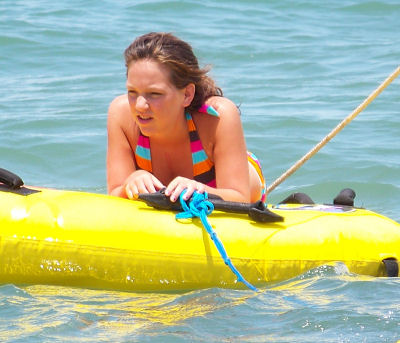 Carney Triad has caused us to put things in perspective and to realize what is important. I still get mad at total floor coverage by Kara and her siblings of clothes etc. in their rooms, but I have a new understanding of letting go of the little things. Life is so precious. I treasure every hormone-filled moment with Kara! I hope for research to find a cure! I hope for sharing with others dealing with this disease! I hope for continued support and prayers from the many who have lifted us up during this journey.
Carney Triad has caused us to put things in perspective and to realize what is important. I still get mad at total floor coverage by Kara and her siblings of clothes etc. in their rooms, but I have a new understanding of letting go of the little things. Life is so precious. I treasure every hormone-filled moment with Kara! I hope for research to find a cure! I hope for sharing with others dealing with this disease! I hope for continued support and prayers from the many who have lifted us up during this journey.
In the summer of 2008, Kara attended the first specialty clinic held for pediatric GIST patients in Bethesda, Maryland at the National Institute of Health. Experts in pediatric GIST from all over the country were present to begin a dedicated study of this very rare cancer. Kara was one of the 14 pediatric patients who had her case reviewed by the experts in the pediatric GIST field. See this link for more information about the first NIH pediatric GIST clinic. The fact that one place is now bringing in these patients to study and follow as a group has great potential in finding leads towards a cure for this disease. Kara’s Mom, Phyllis is honored to be a part of the Consortium for Pediatric and GIST Research (CPGR).
Our newest challenges include dealing with our surgeon moving to another hospital in Ohio much further away that UNC Children’s Hospital which is only 2 hours away from us in Greenville, NC. We, as everyone dealing with this rare disease, will try to continue care with the best experts in this field no matter where we must travel for care.
By Phyllis Gay, PT, Kara’s Mom
Below is Kara’s medical history. I have left it in this form because I thought others might want to use as a guide for themselves. This has been vital for accuracy and for handing over to each new care provider who ask all of the same questions over again. Each parent/pediatric patient should develop and keep a medical history, keep it up to date, and carry it with you at all times. They always place this in front of Kara’s chart anytime she is admitted to the hospital for surgery also.
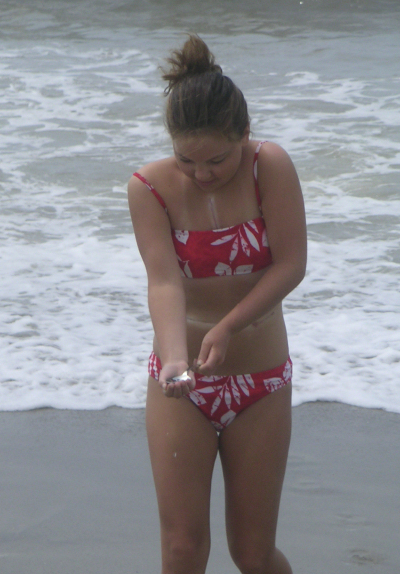 Kara’s Medical History:
Kara’s Medical History:
Carney’s Triad
(paraganglioma tumors; gastrointestinal Stromal tumors; and pulmonary c
hondroma tumors)
DOB: xx-xx-xx-Prior medical information:
Left radius/ulna fractures: 2000 and 2001
Viral meningitis: 2002
Appendectomy: 7-03-03
Left corneal burn 7-02
Left corneal scratch 2-03
Carney Triad history:
Influenza: 1-26-04 through 1-31-04
Complaints of SOB and headaches and stomach pain: 2-02-04
Ultrasound revealed large abdominal mass: 2-03-04
Pitt County Memorial Hospital: CT, MRI, and urine testing for and MIBG studies
CHOP (Philadelphia, PA) testing: CT, MRI, PET, MIBG
Diagnosis of multiple tumors with positive MIBG study.
7 day pre-op treatment with alpha adrenergic receptor blockade
Surgery 2-26-04:
to attempt removal of large abdominal mass (unsuccessful due to excessive bleeding/vascularity of tumor) additional smaller tumor near but outside of stomach removed with pathology of
Gastrointestinal Stromal tumor Ckit positive with spindle cell.
Diagnosis of probable Carney Triad 3-04 at CHOP
Referred by CHOP to Dr. von Allmen/Chapel Hill for surgery evaluation
7 day pre-op alpha adrenergic receptor blockade
Surgery: 4-19 and 20-04 (22 hour surgery):
2 tumors removed/each surrounded by thin capsule:
1st was paraganglioma 7.5 cm in abdominal region (very vascular: many vessels required hand tying off separately);
2nd also paraganglioma 2.0 cm labeled para-aortic mass . Margins were free of tumor
Surgery: 4-27-04:
removal of 4 tumors in stomach and in close proximity to stomach with pathology of Gastrointestinal Stromal tumors. Partial gastrectomy (25% of stomach removed)
All tumors with histopathological features consistent with GIST: dense cellularity; mitotic rate of 12 mitoses per 50 high power field; multifocal evidence of vascular invasion; variable appearance of
both epithelioid as well as spindle cell histological appearance; positive for CD34 and for C-Kit(CD117); negative for desmin, CD99, and actin.
2 tumors were 2.0 cm x 1.5 cm maximum diameter; margins free of tumor; tumor focally disrupted at deep aspect
2 tumors were 2.0 mm with negative margins
J-tube was placed but removed in 1 week due to eating ok.
Following MRI to neck; Embolization: 5-13-04:
to left carotid body region in preparation for surgery. Embolization successful in reducing vascularization by over 75%.
Surgery: 5-14-04:
removal of paraganglioma with cystic degeneration measuring 3.5 cm x 1.5 cm x 1.3 cm/ free margins in carotid body on left with surgically induced Horner syndrome due to parasympathetic nerve
removal which was irremovable from tumor itself with subsequent Muller muscle paralysis on left eyelid.
Surgery: 5-14-04:
to left lingual area lung removal of pulmonary chondroma tumor measuring 1.3 x 1.0 x0.8 cm benign
6-09-04 CT scans showed fluid in lungs
Surgery 6-14-04:
thoroscopic pleural fluid drainage left, centesis with no malignant cells/reactive mesothelium of 800 cc with chest tube insertion for 3 days
8-05 and 06-04 CT,PET and MIBG scans: revealed suspect tumors in stomach
Surgery: 8-18-04:
removal of paraganglioma outside stomach region/ periportal mass measuring 2.5 x2.0 x1.2 cm well circumcised/margins free of tumor.
Additional tissue removed was scar tissue with focal foreign body giant cell reaction seen in stomach/gastric dissection of 3.1 x 2.0 x0.8 cm
Surgery: 11-17-04:
mediastinum tumor attached to aorta and pulmonary artery with pathology of paraganglioma; 4.2 x 2.4 x1.8 cm;6.1 grams;surgical margins free of tumor; 7 lymph nodes-all benign
4-05 CT,PET, and MIBG scans showed suspicious area near liver
Surgery:4-19-05:
Liver biopsy/liver wedge 0.8 x 0.2 x 0.2 cm white nodule revealed no tumors but microscopic fibers correlating to gauze type fibers
6-28-05 CT, PET scans revealed suspicious mass with growth since previous scans above left kidney with increase uptake in PET scan in left adrenal gland
Surgery: 7-15-05
to investigate mass above left kidney/left para aortic mass (suspect paraganglioma due to apparent vascularity visible on scans) measuring 1.6 x 1.8 x1.8 cm no normal adrenal tissue
paraganglioma; left adrenal paraganglioma
Hospitalized 07-24-05 for 2 days: diagnosis colitis
Scans continued every 3 months (PET and CT)
Oncology and surgical consults every 3 months
Continued on 500mg Gleevec daily with 8mg Zofran due to nausea for from 2-04 until 7-06. D/Ced (with limited information in medical studies for recommended duration vs. side effects)
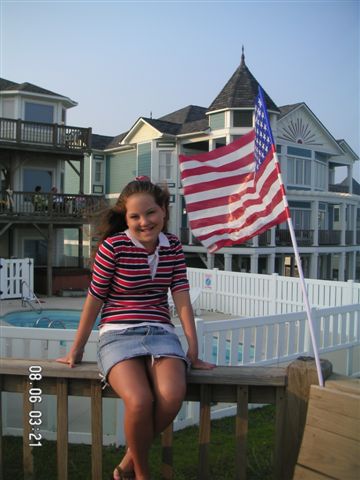 Surgery: 2-24-06
Surgery: 2-24-06
left eye plastic surgery to correct eyelid function due to surgical induced Horner’s syndrome caused from 3rd cranial nerve removal which was within paraganglioma carotid body tumor.
3-17-06: Scans and ultrasound of kidneys due to enlargement shown on last PET scan
Kidney function study / Normal results
4-26-06: Plastic surgery revision of scars over mediastinum and abdominal region completed.
7-08-06: Endoscopic ultrasound of abdomen secondary to negative CT with positive PET in area. GIST not thought to be diagnosis but some nodes seen with questionable appearance.
Ednosonographic findings included 2 to 3 lymph nodes at gastrohepatic ligament area with largest measuring 8.3 x 3.3 mm; no obvious GIST noted.
9-27-06: 3 month PET/CT neck to pelvis
01-03-07: 3 month PET/CT head, neck, chest, abdominal, pelvis
2-07-07: Appointment with pediatric endocrinologist due to recent (since 9-06 low T-4 levels; question hypothyroidism) Continued low free T-4 level .66 ng/dL with mild subnormal TSH levels
04-02-07: Surgery for removal of suspected paraganglioma near left kidney
06-20-07: Repeat scans to further assess site posterior to descending aorta which also showed growth in that area and a suspicious area on PET near stomach
07-10-07: Endoscopic ultrasound to evaluate PET abnormalities in stomach area. Wrong tumor was investigated with biopsy of paraganglioma in mediastinum instead of concentration on stomach area; cursory look at stomach showed no GIST.
10-24-07: Repeat Endoscopic ultrasound due to lack of definite thorough studies in first attempt. Studies showed probable GIST.
11-04-07: surgery to remove 2 small GIST tumors near location in stomach of previous GIST tumors removed in 2004;10% of stomach removed; mitotic rate of 1 out of 50 mitosis (as opposed to 12 out of 50 for GIST tumors removed in 2004). Note: tumor samples sent to site doing pediatric GIST research (Dr. Antonescu).
11-19-07: surgery for thoroscopic removal of paraganglioma posterior/against aorta; chest tube inserted due to need to collapse lung in surgery (some issues with lung pulling away from chest wall post op during chest tube removal attempts)
02-14-08: Bone density scan revealed decreased bone mass with not Z score given due to lack of norms for comparing similar age. Note: studies have shown that gleevec can cause bone loss (Kara was on Gleevec for 26 months) Scans to be repeated at facility with norms younger patients to obtain accurate Z score.
03-05-08: Repeat CT/PET scans show tumor located near right clavicle near apex of lung; T-4 levels low in blood work: levothyroxin increased to 50mcg per day
06-18-08: Attended National Institute of Health’s first Pediatric GIST clinic. Kara was o
ne of 14 pediatric wild type gist patients who were seen at the clinic. Note: A group called the Consortium ofr Pediatric and wildtype GIST Research (CPGR) was formed. Kara’s Mom is a member. Members are : Alberto Pappo, MD; Constantine Stratakis, MD; Christina Antonescu, MD; George Demetri, MD; Katherine Janeway, MD; Lee Helman, MD; Margaret von Mehren, MD; Michael LaQuaglia, MD; Phyllis Gay, PT, pediatric coordinator/GIST Support International; Norman Scherzer, exec. director Life Raft Group; and Su Young Kim, MD, director of pediatric GIST clinic at NIH. See this link for more info on NIH.
09-17-08: Repeat CT/PET scans showed growth of tumor superior to clavicle at ganglion/cervical sympathetic chain; suspect paraganglioma ; close review of scans in 3-08 show that 2 additional tumors were very small and missed but present with increase in size : one tumor in right lower lobe of lung and left upper lobe near hylum. (suspect pulmonary chondromas as they are present on CT but do not show uptake on PET)
11-17-08: surgery to remove paraganglioma superior to right clavicle/apex of lung and attempted ( unable to remove) thorascopic removal of right lower lobe lung tumor. Removal produced new side effects including no sweating on right side, decreased temperature regulation, and increased vasodilation on right side with Horner’s syndrome on the opposite right eye. Kara might be the only bilateral Horner’s syndrome patient with this due to Carney Triad. The paraganglioma was specifically located in the stellate ganglion (or cervicothoracic ganglion) which is a sympathetic ganglion formed by the fusion of the inferior cervical ganglion and the first thoracic ganglion. Stellate ganglion is located at the level of C7 (7th cervical vertebrae), anterior to the transverse process of C7, posterior to the neck of the first rib, and just below the subclavian artery. See this link for more information about this type of surgery:
02-23-09: surgery to remove left lung tumor and right lung tumor. Both tumors were pulmonary chondromas right lung tumor in right lower lobe of lung with small section of lung removed. Left lung tumor was in upper lobe and was encapsulated with only a very small portion of upper lobe being surgically removed.
09-09 1 new tumor being watched in upper posterior mediastinum and 3 small tumors being watched near gallbladder and small intestine with repeat scans/testing in 11/09.

